Generating an attribute
Generate attributes to extract JSON schema properties from parent attributes. Learn more in Generated attributes.
As example data for this task, consider the following JSON that represents a user in an external identity store:
{
"Id": "my-id",
"Ip": "217.145.198.92",
"Name": "John Smith"
}You’ll create a parent attribute that stores this user information passed from a decision request, then generate child attributes that extract properties.
Steps
-
In the PingOne admin console, add an attribute that stores a JSON schema:
-
Go to Authorization > Trust Framework and click the Attributes tab.
-
Click the icon and select Add new attribute, then enter a name for the attribute, such as
External User. -
To define where the attribute pulls information from, click Resolvers, and then click Add Resolver.
-
In the Resolver type list, select Request Parameter.
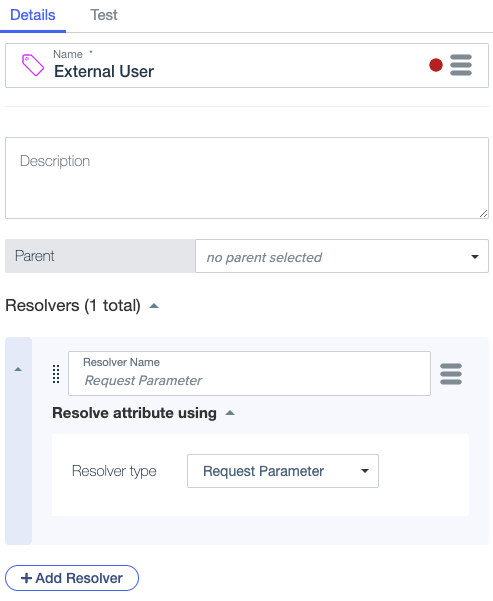
-
In the Value Settings section, select JSON in the Type list.
-
Use an online JSON schema generator to generate a schema for the example JSON that represents the external user.
Example:
{ "$schema": "http://json-schema.org/draft-04/schema#", "type": "object", "properties": { "Id": { "type": "string" }, "Ip": { "type": "string" }, "Name": { "type": "string" } }, "required": [ "Id", "Ip", "Name" ] } -
Copy the resulting schema and enter it in the JSON Schema field.
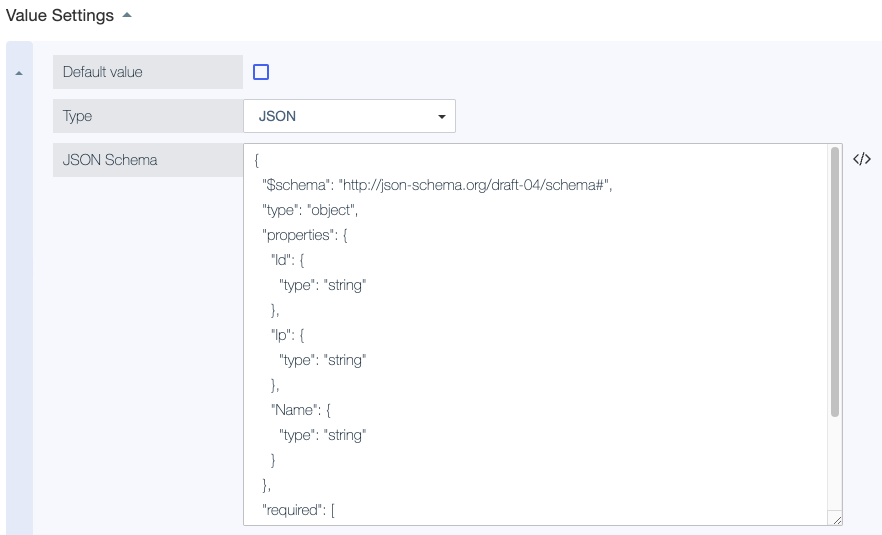
To edit large JSON objects more effectively, open the code editor by clicking
 .
. -
Click Save Changes.
-
-
Generate attributes based on the defined JSON schema.
For example purposes, you’ll generate attributes for PingOne Protect connector service inputs.
-
Add a connector service forPingOne Risk. Enter a name, such as
External User Risk, and then select the service type, and connector types. -
In the Inputs section, click
 next to User ID, and then click the Select an attribute list.
next to User ID, and then click the Select an attribute list. -
Expand the External User parent attribute and select the Id property.
If an attribute hasn’t been generated for a property yet, the property is grayed out. When you select a property, PingOne Authorize adds an attribute that resolves against the parent attribute and a processor that extracts the property.
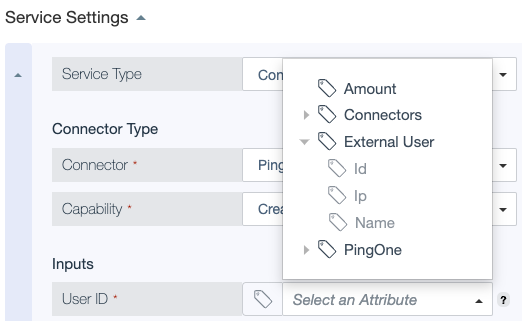
-
For User Type, enter
EXTERNAL. -
For IP Address, select the External User → Ip property to generate an attribute.
-
Click Save changes.
Generated attributes are nested under the parent attribute on the Attributes tab.
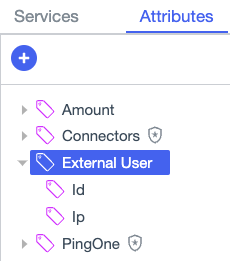
The generated attributes resolve against their parent attribute, as shown in the following image.
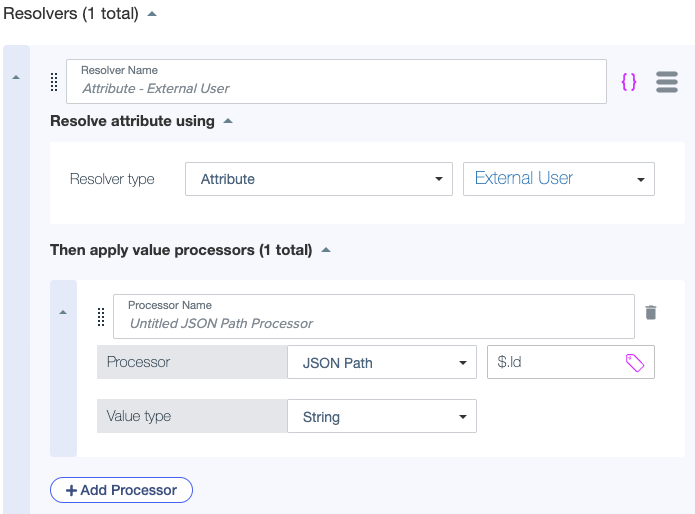
-